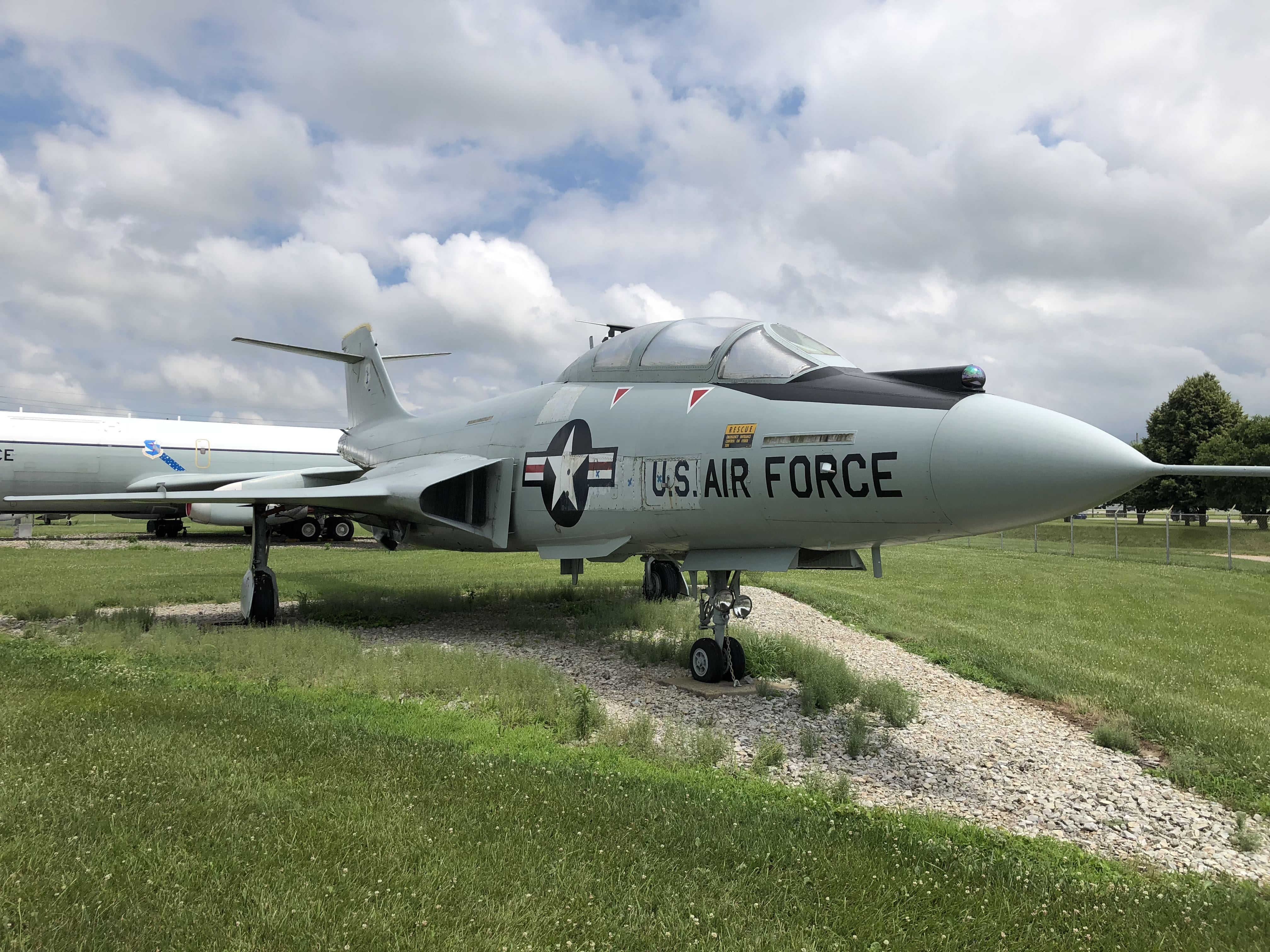MCDONNELL DOUGLAS
F-101B VOODOO

Developed from the XF-88 penetration fighter, the F-101 originally was designed as a long-range bomber escort for the Strategic Air Command.
However, when high-speed, high-altitude jet bombers such as the B-52 entered active service, escort fighters were not needed. Therefore, before production began, the F-101’s design was changed to fill both tactical and air defense roles.
The F-101 made its first flight on Sep. 29, 1954. The first production F-101A became operational in May 1957, followed by the F-101C in Sep. 1957 and the F-101B in Jan. 1959.
By the time F-101 production ended in March 1961, McDonnell had built 785 Voodoos including 480 F-101Bs, the two-seat, all-weather interceptor used by the Air Defense Command.
The F-101 could climb four miles straight up in one minute.
In the reconnaissance versions, the Voodoo was the world’s first supersonic photo-recon aircraft. These RF-101s were used widely for low-altitude photo coverage of missile sites during the 1962 Cuban Missile Crisis and during the late 1960s in Southeast Asia.
The F-101B’s, used as fighter interceptors by Air Defense Command, all were two-seaters. The F-101 set the world speed record in 1958 of 1208mph. The F-101C was the world’s first super sonic reconnaissance plane. Flight controls in the F-101 were only in the front cockpit.
| SPECIFICATIONS | |
| Span: | 39 ft. 8 in. |
| Length: | 71 ft. 1 in. |
| Height: | 18 ft. 0 in. |
| Weight: | 52,400 lbs. max. |
| Armament: | Two AIR-2A rockets plus two AIM-4 guided missiles |
| Engines: | Two Pratt & Whitney J57-P-55s of 16,900 lbs. thrust ea. (with afterburner) |
| Crew: | Two |
| Cost: | $ 1,819,000 |
| Tail Number: | 58-0321 |
| Years in Service: | 1957-1978 |
| PERFORMANCE | |
| Maximum Speed: | 1,095 mph |
| Cruising Speed: | 545 mph |
| Range: | 1,754 miles |
| Service Ceiling: | 52,100 feet |